MiddleVR Config#
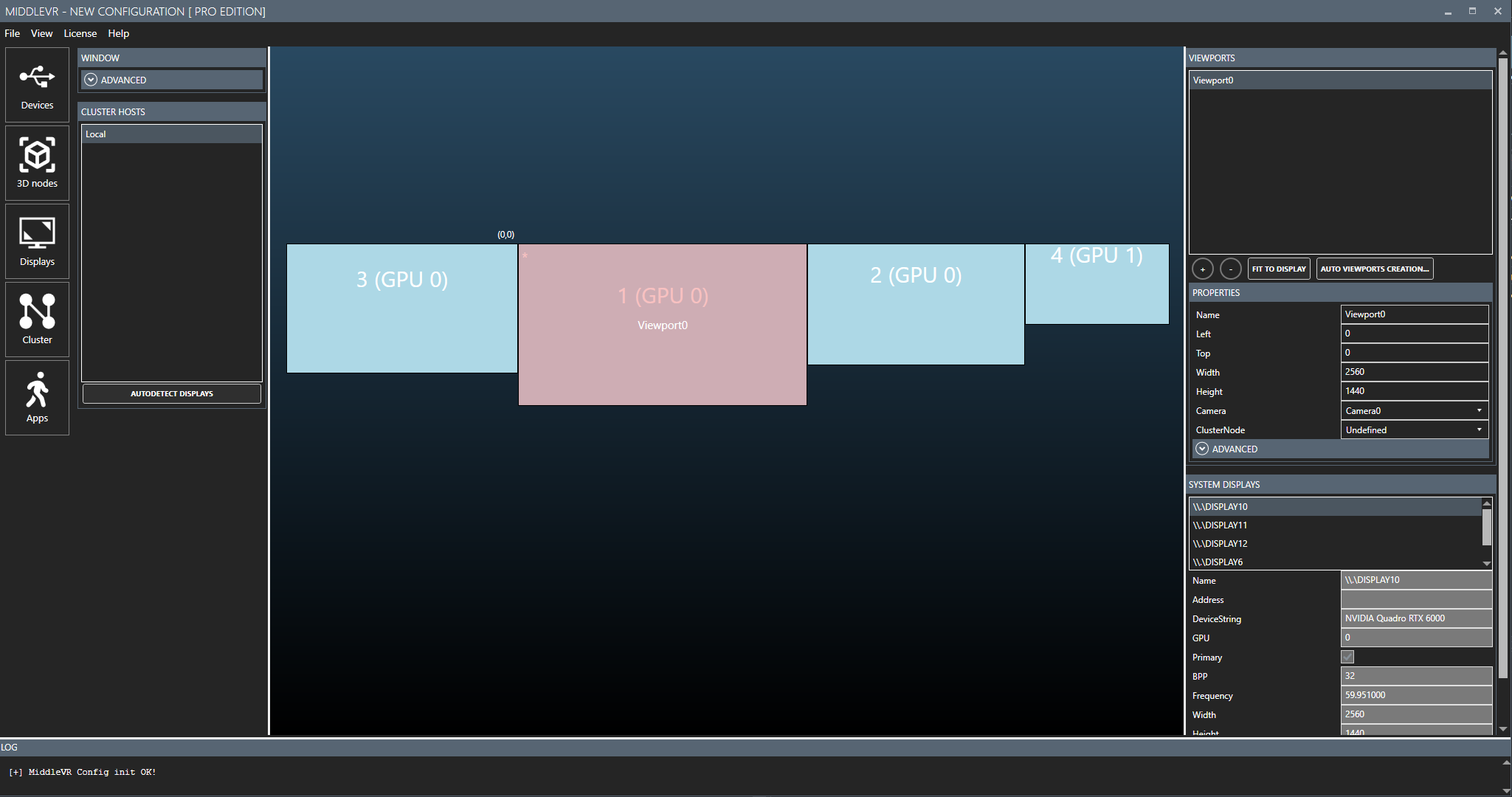
Configuration and workflow#
A typical workflow to use MiddleVR is first to create a description of your system.
MiddleVR will then use this description to configure the 3D application to match this description.
This description is called a Configuration and is stored by MiddleVR
as a VR XML file with the .vrx extension.
The description includes:
- A description of where the physical screens are positioned in the real world
- A description the different cameras used for rendering
- A description of the viewports used to display the cameras
- Optionally for VR systems the devices that are used,
and description of how those devices interact with the real world: for
example specifying that tracker
Ais tracking the head of the user whereas trackerBis tracking the user's hand
Examples of template configurations#
MiddleVR ships with multiple configuration examples that you can find
in File > Open template configuration
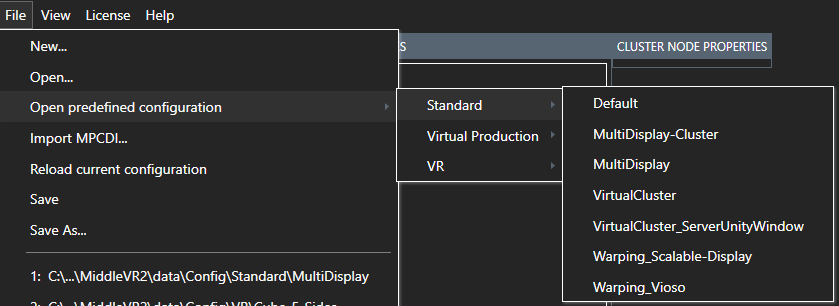
Here is the complete list of template configurations:
- Standard:
-- Default: The default configuration. A simple viewport and mouse navigation
-- Grid: An array of 4x3 screens
-- MultiDisplay: A simple multi-display setup with 3 orthogonal screens and 3 viewports
-- MultiDisplay-Cluster: A simple multi-display cluster config with 1 server and 2 clients
-- VirtualCluster: Two cluster nodes on the current computer. Perfect to test your cluster application on one computer
-- Warping_Scalable-Display: Sample for Scalable Display
-- Warping_Vioso: Sample for Vioso
- Virtual Production:
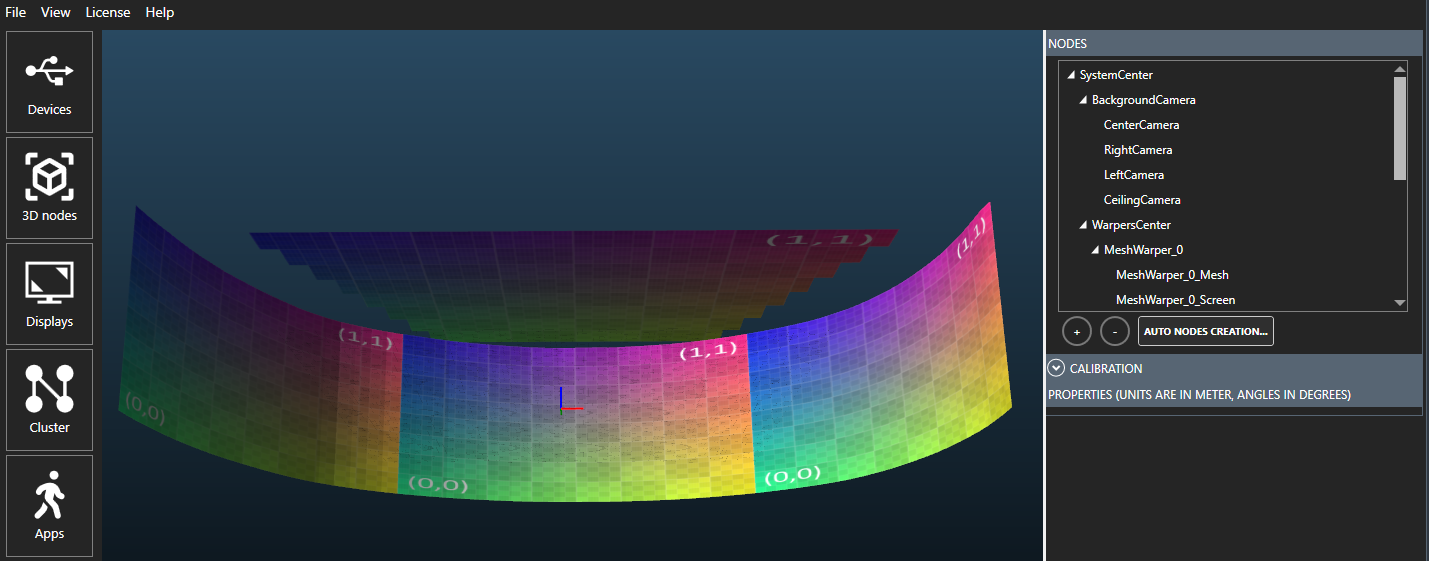
-
VirtualStage-Curved: A virtual stage with 4 curved LED panels.
-
VirtualStage-Optitrack: A simple virtual stage with a camera and a light tracked by Optitrack. See Tutorial - Virtual Stage
-
VirtualStage-Stype: A simple virtual stage with a camera and a light tracked by Stype. See Tutorial - Virtual Stage
-
VirtualStage-VanishingPoint: A simple virtual stage with a camera and a light tracked by Stype. See Tutorial - Virtual Stage
-
VirtualStage-ViveController: A simple virtual stage with a camera and a light tracked by Vive controllers/trackers. See Tutorial - Virtual Stage
-
VR
-
AdvancedCalibration: Contains a more complex hierarchy for more finetuned calibration of eye and hand offsets
-
Cube-5-Sides: A complete configuration for a 5-sided immersive cube and 5 computers in cluster
-
Cube-5-Sides-Flatten: A debug configuration where all viewports are displayed on one computer
-
Cube-5-Sides-Flatten-VirtualCluster: A debug configuration where all viewports are displayed on one computer, but each viewport is a separate cluster node
-
DefaultVR: Simple head/hand configuration
-
HoloStage: An holostage has one wall in the front and one floor
-
SimpleStereoActive: A single active stereo viewport
-
SimpleStereoPassive: A single passive stereo viewport
-
UnityXR: Demonstrates how to setup two hands and wands to use with UnityXR
-
VirtualClusterStereo: Same as VirtualCluster but with active stereoscopy
-
Wall: A simple stereoscopic wall
-
Wall_DualViewpoint: A Wall with dual viewpoint for two tracked users, each with active stereo
-
Wall_TripleViewpoint: A Wall with triple viewpoint for three tracked users, each with active stereo
-
Wall_SwitchUser: A wall where the viewpoint can be switched from one user to the other based on the proximity of the wand
MiddleVR configuration interface#
The MiddleVR configuration tool is divided into multiple elements:
- The devices window,
- The 3D nodes window,
- The displays window,
- The cluster window,
- The apps window,
- The menu

Devices#
The devices window allows you to configure which devices you want to use for the current configuration:
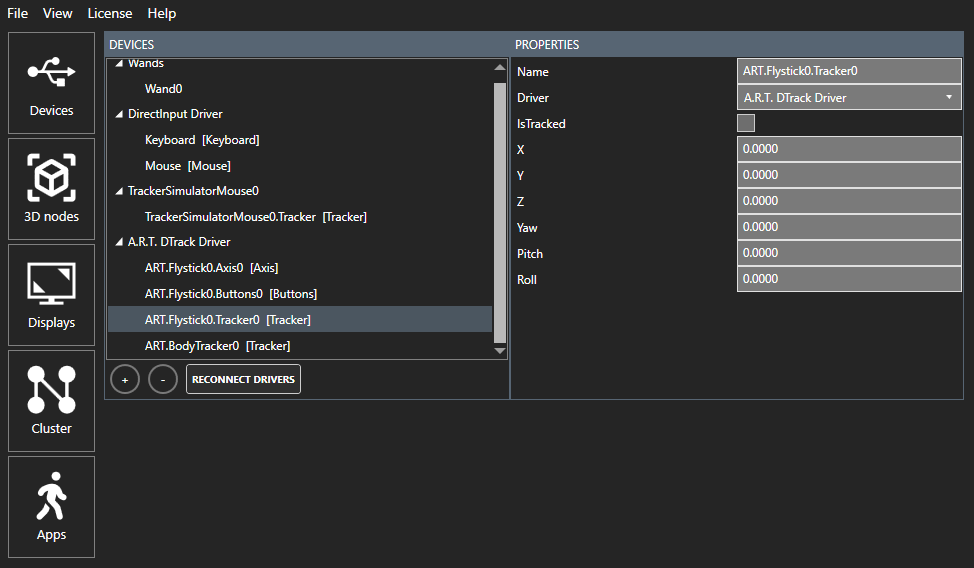
3D Nodes#
The 3D nodes window allows you to create a description of the real world elements that will influence the 3D rendering and interaction of your virtual world.

In the 3D View you can move by using the mouse buttons. To reset
the view to it's original position you can click on the "Reset View"
button in the "View" menu. You can also center the view on a specific 3D
node by selecting it in the TreeView or the 3D view and pressing F.
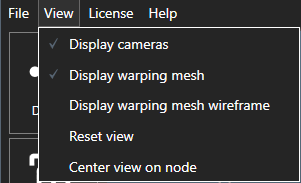
Displays#
The displays window allows you to specify where to display the rendering of your cameras.

The viewports are displayed as red rectangles. The available displays are displayed in blue.
Cluster#
The cluster window manages the configuration of the cluster nodes and specific cluster parameters:
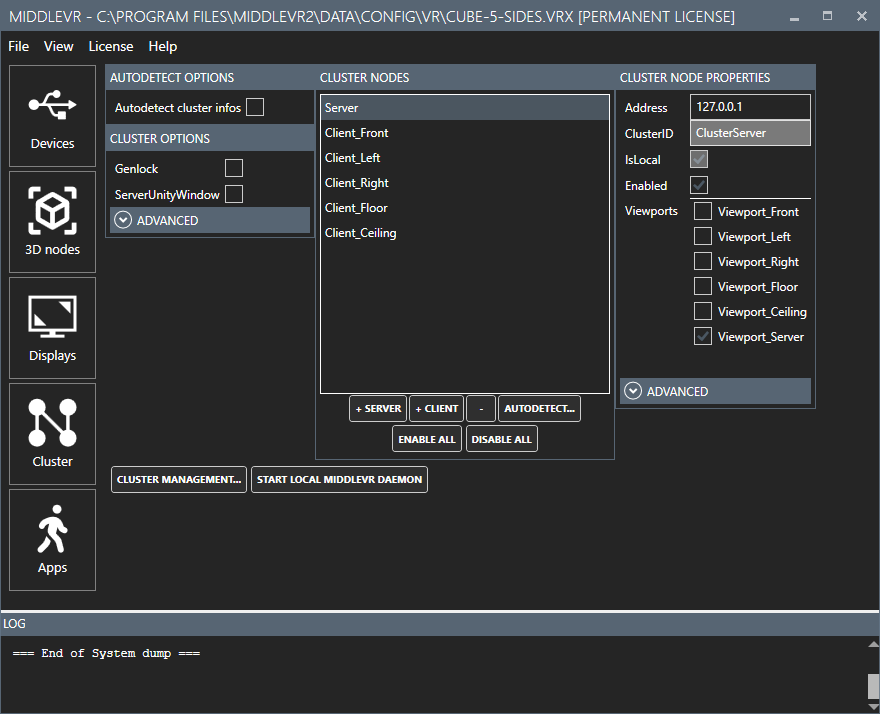
Apps#
The apps window allows you to manage the applications that you want to run with MiddleVR. It allows you to choose an application and then select the configuration file it should be running with.
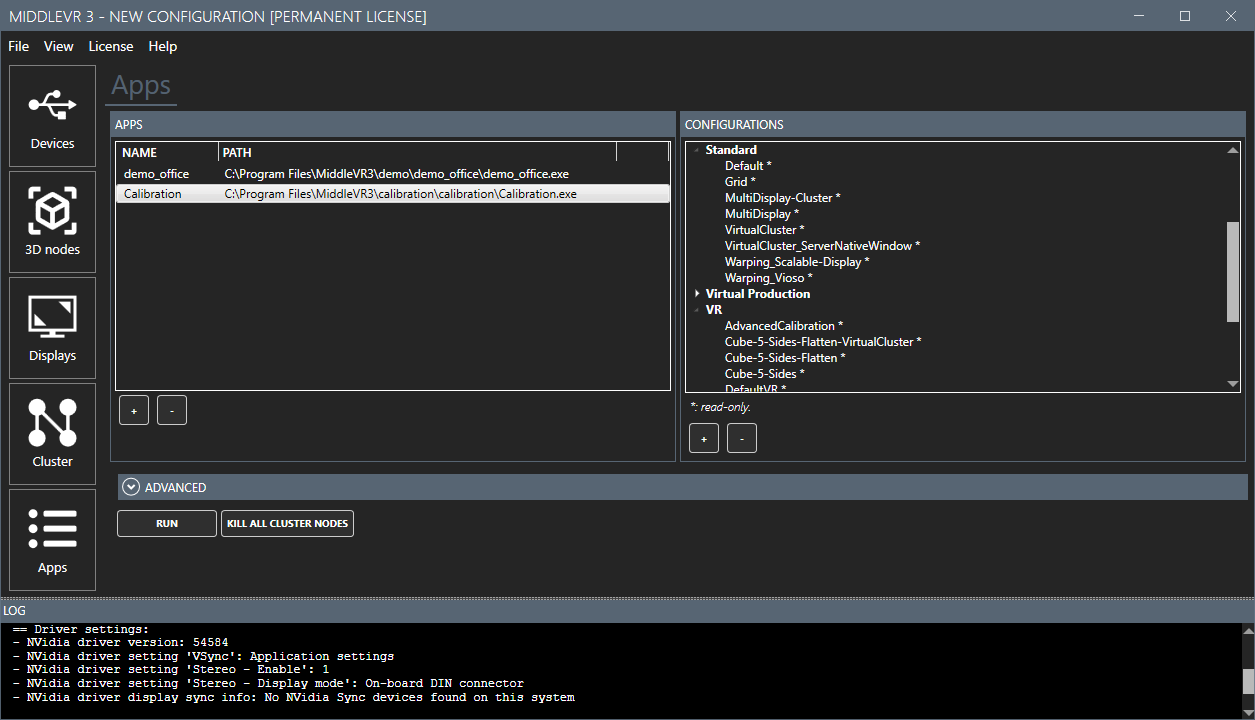
Menu#
- File
-- New...: Creates a new configuration
-- Open...: Opens a configuration
-- Open template configuration: Select one of the template configurations to open
-- Reload current configuration: Reloads the current configuration
-- Save: Saves the current configuration to the same location
-- Save as...: Saves the current configuration to a new location
- View
-- Display cameras: Show/Hide cameras. Useful when there are many cameras obfuscating the view.
-- Display warping mesh: Show/Hide the warping mesh. Useful if the warping mesh slows down the rendering.
-- Display warping mesh wireframe: Show/Hide the warping mesh wireframe. Useful to better see the details of the warping mesh.
-- Reset view: Resets the view position and orientation
-- Center view on node: Focus the view on the currently selected node.
- License
-- Register a license to this computer...: Opens the popup-window to register a license
-- Get file license manually or offline: Opens the popup-window to get a license file manually or offline
-- Add license file...: Adds a license file
- Help
-- Open default logs folder: Opens the file explorer to %tmp%/MiddleVR
-- Open licenses folder: Opens the file explorer to %programdata%/MiddleVR
-- Open tools folder. Opens C:\Program Files\MiddleVR3\Tools
-- User Guide: Opens the local user guide
-- Class Reference: Opens the class reference
-- Support: Opens the support website
-- About...: Opens the about popup window